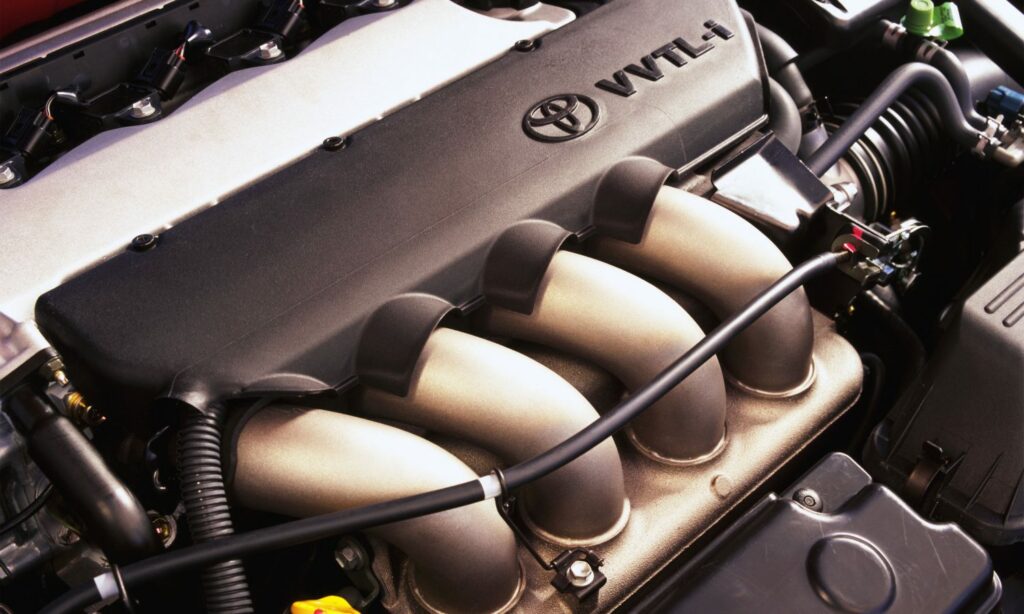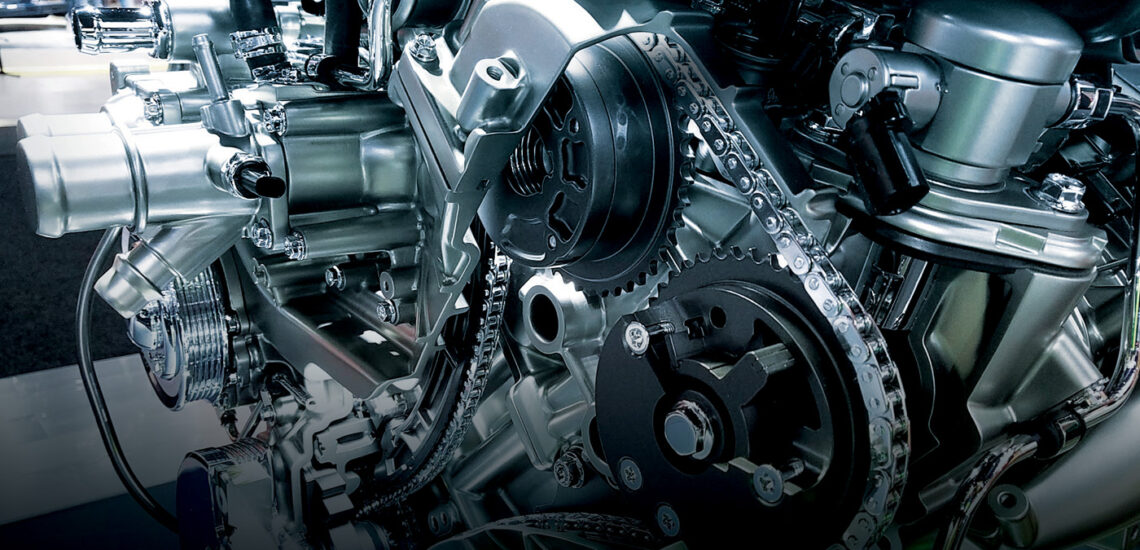Motorun performans kalitesi, verimliliği, gücü, torku, işletme ekonomisi, valf zamanlaması, yani emme ve egzoz valflerinin açılıp kapanmasının zamanlaması dahil olmak üzere birçok faktöre bağlıdır.
Geleneksel dört zamanlı içten yanmalı bir motorda, valfler eksantrik mili kamları tarafından çalıştırılır. Bu kamların profili, torku ve açılma süresini (yani fazların genişliğini) ve valflerin strokunu belirler.
Çoğu modern motorda fazları değiştiremezsiniz. Ve bu tür motorların çalışması çok verimli değildir. Gerçek şu ki, silindirdeki ve emme ve egzoz portlarındaki gazların (yakıt karışımı ve egzoz) davranışının doğası, motorun çalışma modlarına bağlı olarak değişir. Akış hızı sürekli değiştiğinden, elastik gaz ortamının çeşitli titreşimleri, yararlı rezonansa veya tersine parazitik tıkanıklığa yol açar. Bu nedenle, silindirlerin doldurulmasının hızı ve verimliliği farklı motor çalışma modlarında aynı değildir.
Örneğin, rölanti çalışması için, üst üste binen fazlar (hem emme hem de egzoz valflerinin açık olduğu zaman) olmadan valflerin geç açılıp erken kapandığı dar valf zamanlama fazları uygundur. Neden? Çünkü bu şekilde egzoz gazlarının emme manifolduna boşaltılması ve yanıcı karışımın bir kısmının egzoz borusuna salınması hariç tutulabilir.
Maksimum güçte çalışırken durum çok değişir. Hız arttıkça valflerin açılma süresi doğal olarak azalır, ancak silindirler boyunca yüksek tork ve güç sağlamak için rölantide olduğundan çok daha fazla gaz hacmi çalıştırmak gerekir. Böylesine zor bir görev nasıl çözülür? Valfleri biraz daha erken açın ve açılma sürelerini artırın, başka bir deyişle fazları olabildiğince geniş yapın. Aynı zamanda, silindirlerin daha iyi drenajı için genellikle üst üste binme fazı daha geniş, rpm ne kadar yüksekse o kadar geniş yapılır.
Bu nedenle tasarımcılar, motorları geliştirirken ve ince ayar yaparken bir dizi birbirini dışlayan gereksinimi birbirine bağlamak ve zor uzlaşmalar yapmak zorundadır. Kendiniz karar verin. Aynı sabit fazlar ile, motor düşük ve orta hızlarda iyi çekişe, yüksek hızlarda kabul edilebilir bir güce sahip olmalıdır. Ayrıca, rölantide süzülmeli, mümkün olduğunca verimli ve çevre dostu olmalıdır. Sorun bu!
Ancak bu görevler tasarımcılar için uzun zamandır bezelye ayıklamak kadar kolaydı – valf zamanlama fazlarının genişliğini kaydırarak ve değiştirerek motorun özelliklerini tanınmayacak şekilde değiştirebiliyorlar. Torku artırmanız mı gerekiyor? Tamam. Gücü artırmanız mı gerekiyor? Elbette. Tüketimi azaltmanız mı gerekiyor? Sorun değil. Ancak, bazen diğerlerini iyileştirmek için bazı parametrelerden ödün vermeniz gerektiği ortaya çıkıyor.
Peki ya gaz dağıtım mekanizması farklı motor çalışma modlarına uyum sağlamak üzere eğitilirse? Kolayca. Neyse ki, bunu yapmanın birçok yolu var. Bunlardan biri, kontrol elektroniği ve hidroliğinin etkisi altında eksantrik milini başlangıç pozisyonuna göre belirli bir açıda döndürebilen özel bir kavrama olan faz değiştiricinin kullanılmasıdır. Böyle bir sistem çoğunlukla emme kısmına monte edilir. Hız arttıkça, kavrama mili dönüş sırasında döndürür, bu da emme valflerinin daha erken açılmasına ve bunun sonucunda silindirlerin yüksek hızlarda daha iyi dolmasına yol açar.
Ancak bastırılamaz mühendisler burada durmadı ve sadece fazları kaydırmakla kalmayıp aynı zamanda onları genişletebilen veya daraltabilen bir dizi sistem geliştirdiler. Bu, tasarıma bağlı olarak birkaç şekilde elde edilebilir. Örneğin, Toyota VVTL-i sisteminde, belirli devirlere (6000 rpm) ulaştıktan sonra normal kam yerine değiştirilmiş profile sahip ek bir kam devreye girmeye başlar. Bu kamın profili, valf hareketinin farklı bir yasasını, daha geniş fazlar belirler ve bu arada daha uzun bir strok sağlar. Krank mili, 6000-6500 rpm’lik bir dönüş hızında maksimum rpm’ye (yaklaşık 8500 rpm) kadar döndürüldüğünde, motor ikinci bir rüzgar alıyor gibi görünür ve bu da hızlanma sırasında araca sert ve güçlü bir kalkış sağlayabilir.
Torku ve açılma süresini değiştirmek harika. Peki ya kaldırma yüksekliğini değiştirmeye çalışırsak? Sonuçta, bu yaklaşım gaz kelebeğinden kurtulmanızı ve motor çalışma modlarını kontrol etme sürecini valf trenine kaydırmanızı sağlar.
Gaz kelebeği valfi neden zararlıdır? Düşük ve orta hızlarda silindirlerin doldurulmasını kötüleştirir. Sonuçta, motor çalışırken kapalı gaz kelebeği altında emme kanalında yüksek bir vakum oluşur. Bu neye yol açar? Seyreltilmiş gaz ortamının (yakıt-hava karışımı) yüksek ataletine, silindirin bir şarjla doldurulmasının kalitesinin bozulmasına, motor çıkışında ve gaz pedalı tepki hızında bir azalmaya neden olur.
Bu nedenle, emme valfini yalnızca silindirin yanma karışımıyla istenen şekilde doldurulması için gereken süre boyunca açmak ideal bir seçenek olacaktır. Mühendislerin cevabı mekanik bir emme valfi kaldırma kontrol sistemidir. Bu tür sistemlerde, kaldırma yüksekliği ve buna bağlı olarak emme aşamasının süresi, gaz pedalına basılmasına bağlı olarak değişir. Çeşitli kaynaklara göre, gaz kelebeği olmayan bir kontrol sisteminin kullanımından elde edilen tasarruf %8 ila %15 arasında değişebilir, güç ve torkta bir artış – %5-15 aralığında. Ancak bu son çare değildir.
Valflerin sayısı ve boyutu mümkün olan maksimum seviyeye yaklaşmış olmasına rağmen, silindirlerin doldurulması ve temizlenmesinin verimliliği daha da yükseltilebilir. Neden? Valflerin açılma hızı nedeniyle. Ancak mekanik tahrik, elektromanyetik olana olan yerini kaybeder.
Elektromanyetik tahrikin bir diğer avantajı nedir? Gerçek şu ki, valf kaldırma yasası (herhangi bir zamanda ivmelenme) mükemmelleştirilebilir ve valf açılma süresi çok geniş sınırlar içinde değiştirilebilir. Yapılandırılan programa göre elektronik, zaman zaman gereksiz valfleri açmayabilir ve silindirleri hiç devre dışı bırakabilir. Neden? Örneğin rölantide, sabit modda sürüş sırasında veya motorla fren yaparken paradan tasarruf etmek için. Modlara ek olarak, elektromanyetik valf treni, sıradan bir dört zamanlı motoru çalışma sırasında altı zamanlı bir motora dönüştürebilir. Bu tür sistemlerin yakında montaj hattında görünüp görünmeyeceğini merak ediyoruz.

Belki de, zamanlama nedeniyle motorun verimliliğini daha fazla artırmak artık mümkün olmayacaktır. Aynı hacimden daha az tüketimle daha fazla güç ve tork elde etmek, yalnızca diğer araçların kullanımıyla mümkün olacaktır. Örneğin, kombine süperşarj veya sıkıştırma oranını değiştiren yapılar, diğer yakıtlar. Ancak bu tamamen farklı bir hikaye.
Bu bir çeviridir. Orijinalini buradan okuyabilirsiniz: https://www.drive.ru/technic/4efb330700f11713001e33f9.html

Yayımlanmış Ocak 13, 2022 • Okuma süresi: 5 dakika






